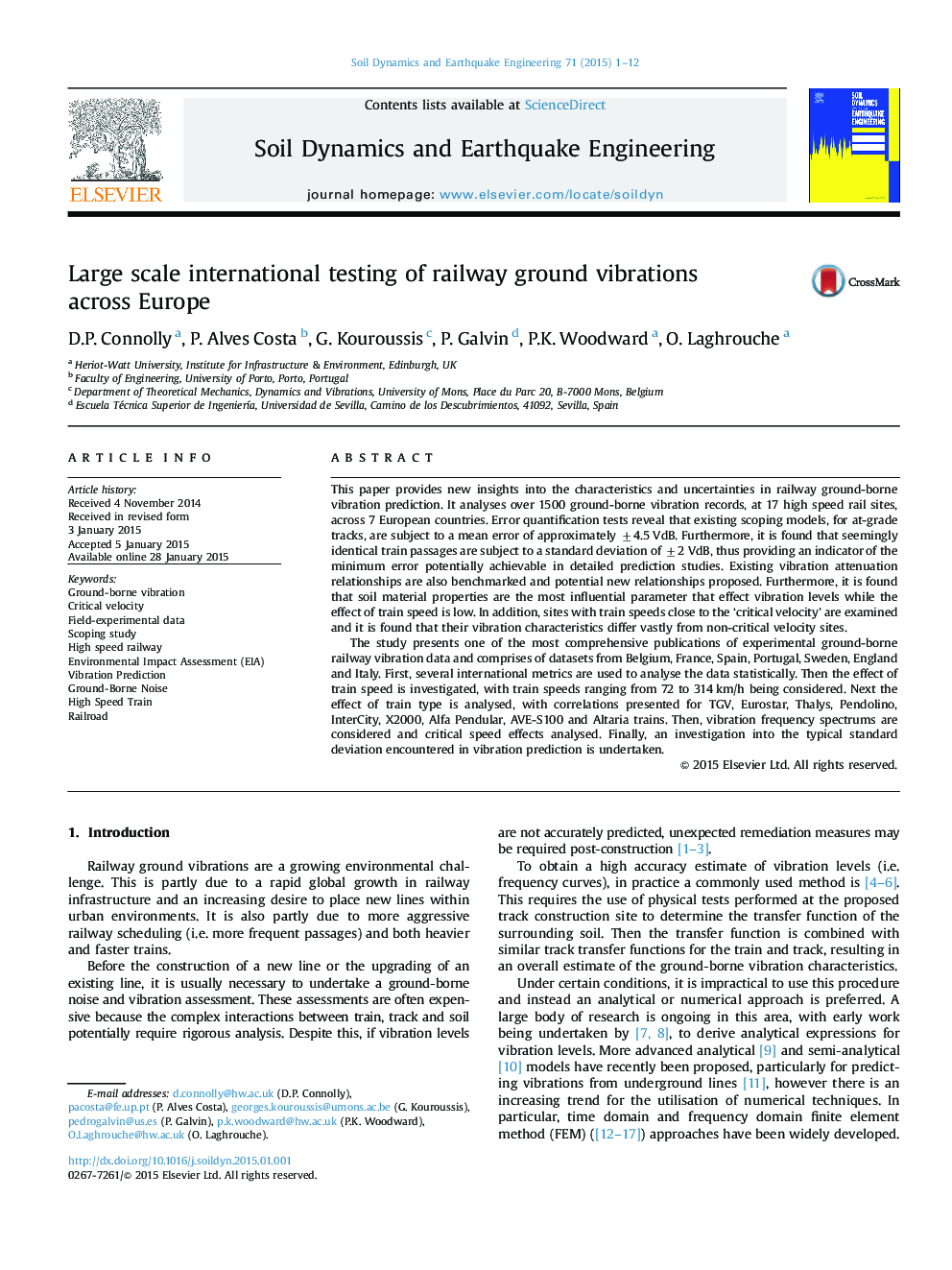| Article ID | Journal | Published Year | Pages | File Type |
|---|---|---|---|---|
| 304016 | Soil Dynamics and Earthquake Engineering | 2015 | 12 Pages |
•Typical scoping models shown to have mean error of approximately ±4.5 VdB•Critical velocity analysed to determine low frequency vibration effects•Analysis of TGV, Eurostar, Thalys, Pendolino, X2000, Alfa Pendular, AVE-S100 trains•Datasets from Belgium, France, Spain, Portugal, Sweden, England and Italy•Existing vibration laws benchmarked and new alternatives proposed
This paper provides new insights into the characteristics and uncertainties in railway ground-borne vibration prediction. It analyses over 1500 ground-borne vibration records, at 17 high speed rail sites, across 7 European countries. Error quantification tests reveal that existing scoping models, for at-grade tracks, are subject to a mean error of approximately ±4.5 VdB. Furthermore, it is found that seemingly identical train passages are subject to a standard deviation of ±2 VdB, thus providing an indicator of the minimum error potentially achievable in detailed prediction studies. Existing vibration attenuation relationships are also benchmarked and potential new relationships proposed. Furthermore, it is found that soil material properties are the most influential parameter that effect vibration levels while the effect of train speed is low. In addition, sites with train speeds close to the ‘critical velocity’ are examined and it is found that their vibration characteristics differ vastly from non-critical velocity sites.The study presents one of the most comprehensive publications of experimental ground-borne railway vibration data and comprises of datasets from Belgium, France, Spain, Portugal, Sweden, England and Italy. First, several international metrics are used to analyse the data statistically. Then the effect of train speed is investigated, with train speeds ranging from 72 to 314 km/h being considered. Next the effect of train type is analysed, with correlations presented for TGV, Eurostar, Thalys, Pendolino, InterCity, X2000, Alfa Pendular, AVE-S100 and Altaria trains. Then, vibration frequency spectrums are considered and critical speed effects analysed. Finally, an investigation into the typical standard deviation encountered in vibration prediction is undertaken.
